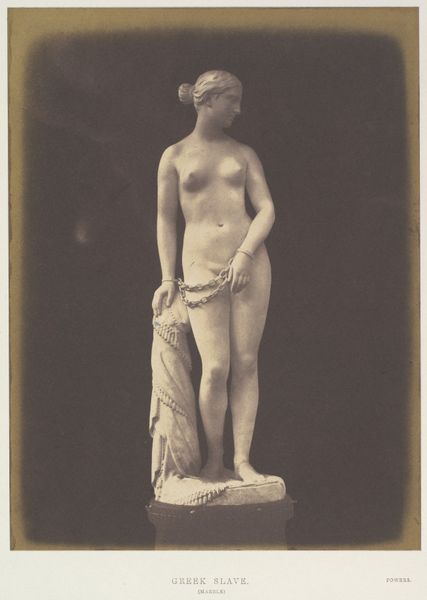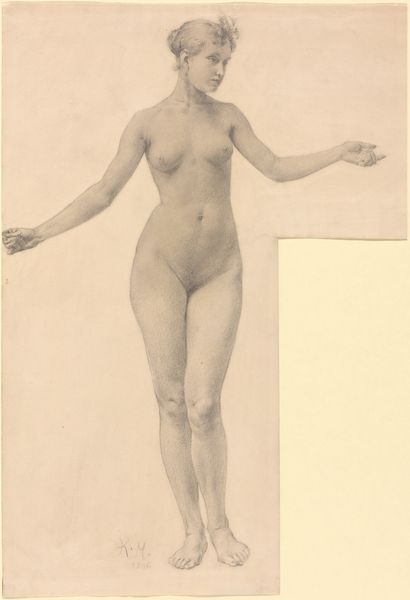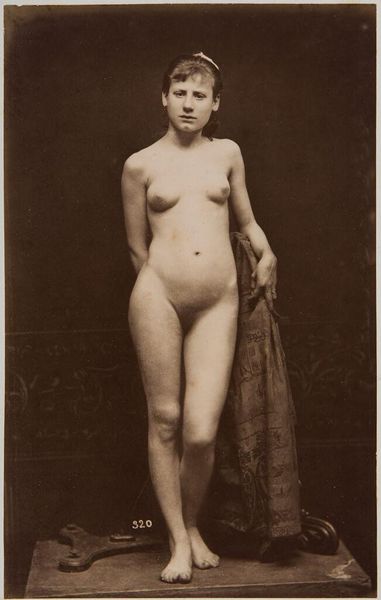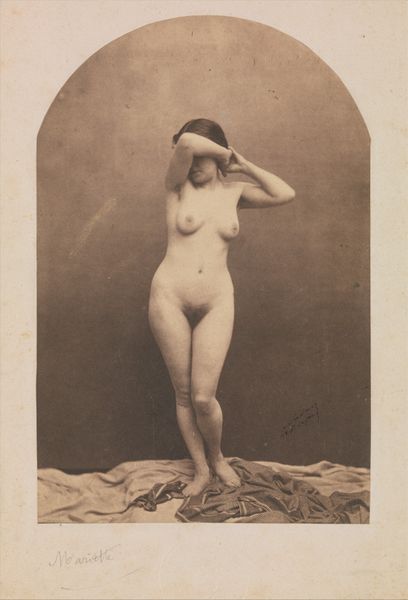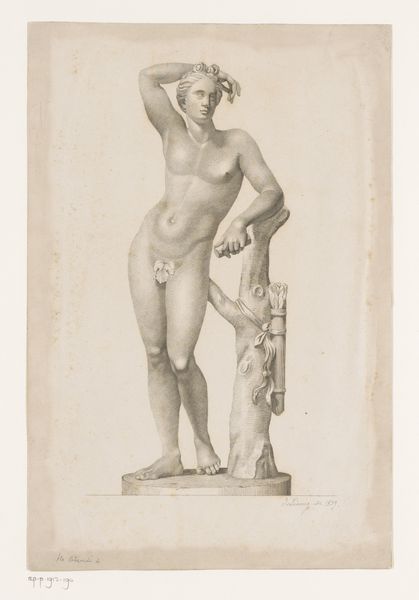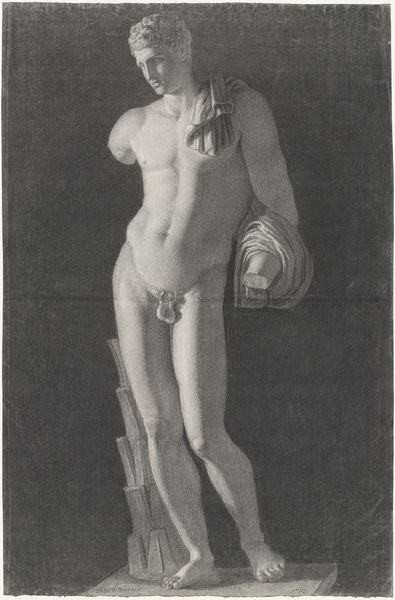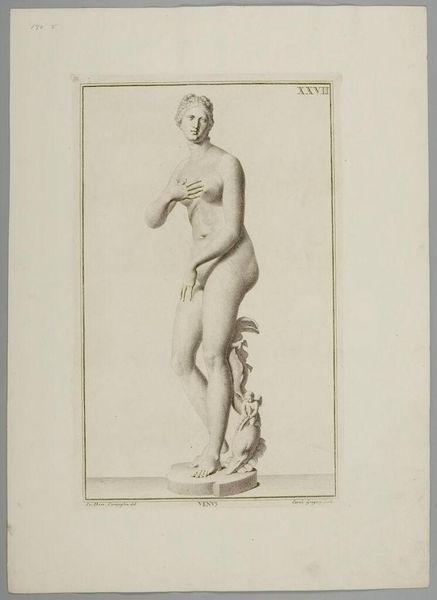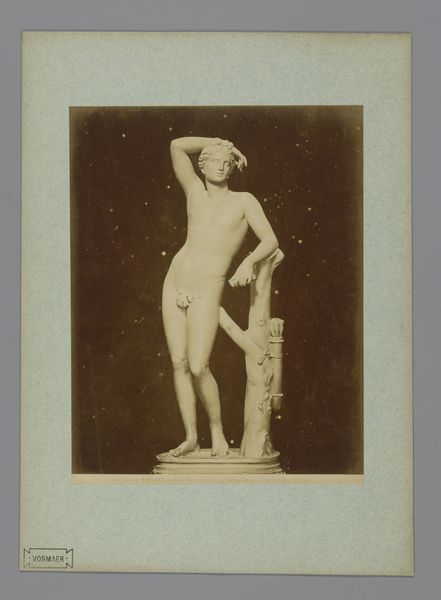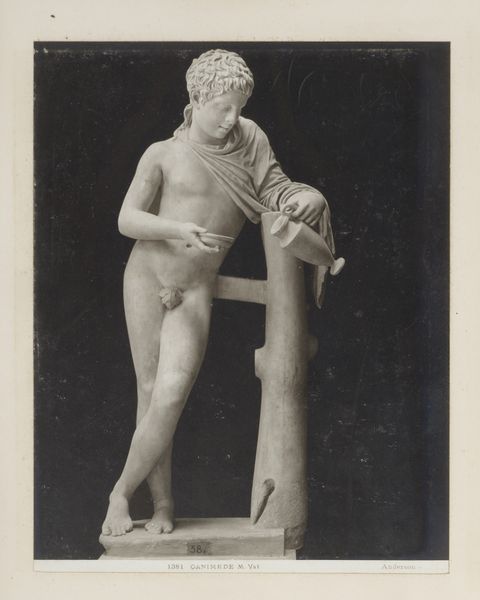
Vloerlantaarn in de vorm van een naakte dame, zij houdt op haar hoofd een kelk vast. c. 1878 - 1881
0:00
0:00
bronze, photography, sculpture
#
bronze
#
photography
#
sculpture
#
nude
Dimensions: height 375 mm, width 230 mm, height 620 mm, width 438 mm
Copyright: Rijks Museum: Open Domain
Curator: Let’s discuss this rather striking photographic print by Louis-Emile Durandelle, taken sometime between 1878 and 1881. The object depicted is titled, “Floor lamp in the shape of a naked lady, she holds a cup on her head.” Editor: My first impression is a surprising blend of neoclassical aspiration with a distinct aura of melancholic grandeur. The pose feels poised, burdened. Curator: Note how Durandelle meticulously captures the texture of the bronze sculpture—the subtle nuances in its patina and the crisp details in its contours. Observe also the semiotic nature of a luminary being held aloft on a female form. Light equals knowledge? Enlightenment values placed literally above all? Editor: It's certainly charged with the aesthetics of its time, yet consider how this object might also epitomize the objectification of women within the decorative arts and its cultural assumptions. A beautiful figure repurposed to serve utilitarian, implicitly masculine, desires. How can we reconcile such potent exploitation? Curator: A bronze woman functioning as mere illumination, while problematic through modern perspectives, we must remain sensitive to its historic position: during a time when sculpture's role still echoed ideals rooted deep inside Western civilization's art historical canon! Consider how the spiral structure around the lighting fixture adds another interesting design feature and could lead back toward classical understandings if not taken as further oppressive architecture. Editor: The photograph itself flattens the lamp’s texture, altering any sense of volume we might find examining its actual bronze body within three dimensions, transforming it paradoxically into its representation while ironically documenting reality; what this illuminates perhaps extends beyond any intentional aesthetic values conceived! Curator: These stark contrasting elements add significant weight. It’s almost impossible separating questions asked about aesthetic form apart issues surrounding moral ones posed. In either aspect's critical engagement. Editor: True. I walk away thinking about how complex this period really stood historically. Even in simple everyday domestic artwork or architecture.
Comments
No comments
Be the first to comment and join the conversation on the ultimate creative platform.
